October 10, 2002
Yet another aurora erupted on October 10, 2002. When I first noticed it shortly after sundown, the display was already impressive, with a bright green arc, topped by a red glow and containing several bright rays.
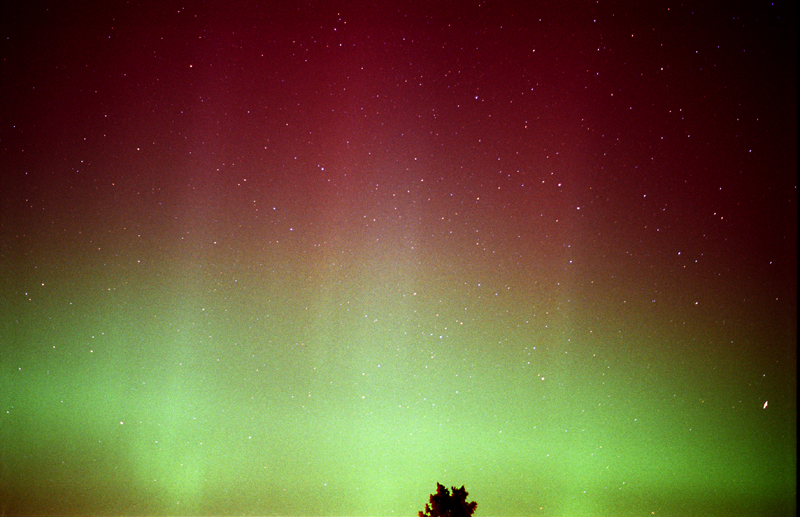
15 seconds exposure. Fuji Superia 200 film.
50mm f/2 Nikkormat lens.
Looking almost due north towards Camelopardus. Capella is in the lower right cornor.
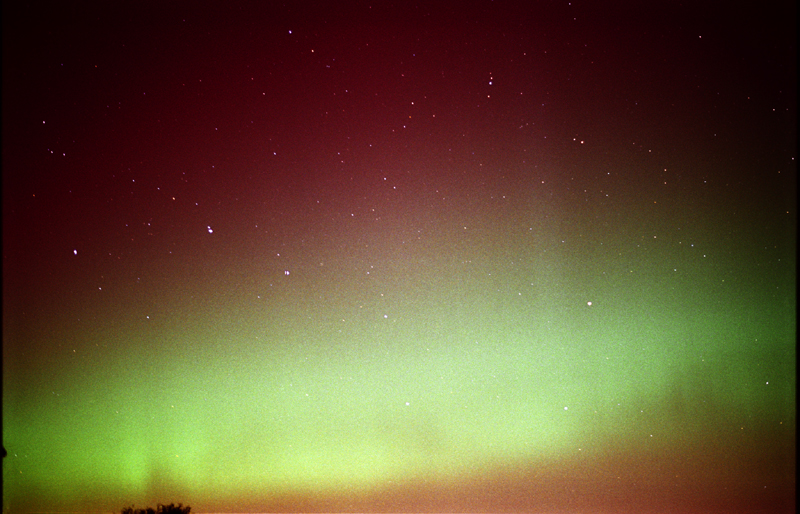
30 seconds exposure. Fuji Superia 200 film.
50mm f/2 Nikkormat lens.
The stars of Ursa Major shine dimly through the aurora.
The glow at the bottom of the picture is light pollution from Minneapolis, about 35 km away.
After about 15 minutes, the display died down a little, although the bright green arc remained.
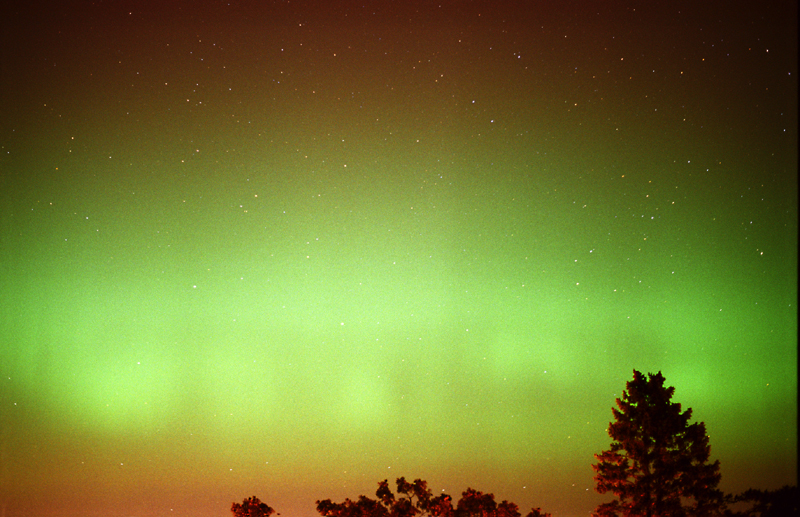
15 seconds exposure. Fuji Superia 200 film.
50mm f/2 Nikkormat lens.
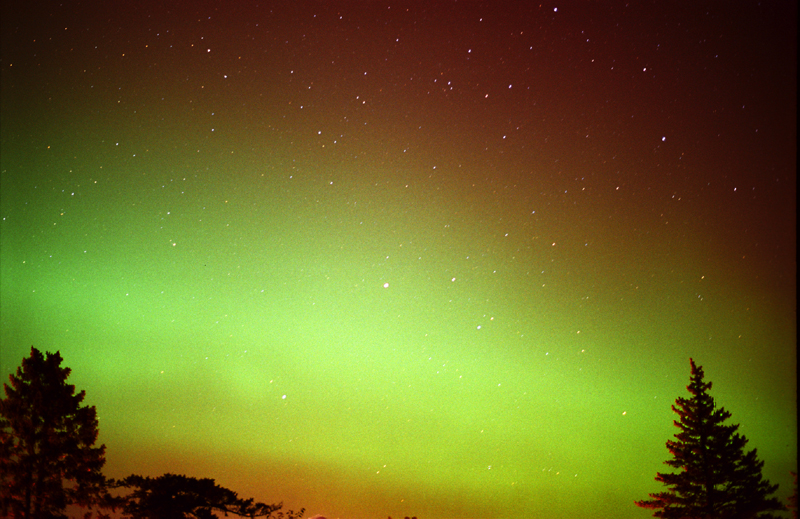
30 seconds exposure. Fuji Superia 200 film.
50mm f/2 Nikkormat lens.
Looking north east towards Auriga. Capella is close to the middle of the photograph.
The aurora remained relatively quiet for about 50 minutes.
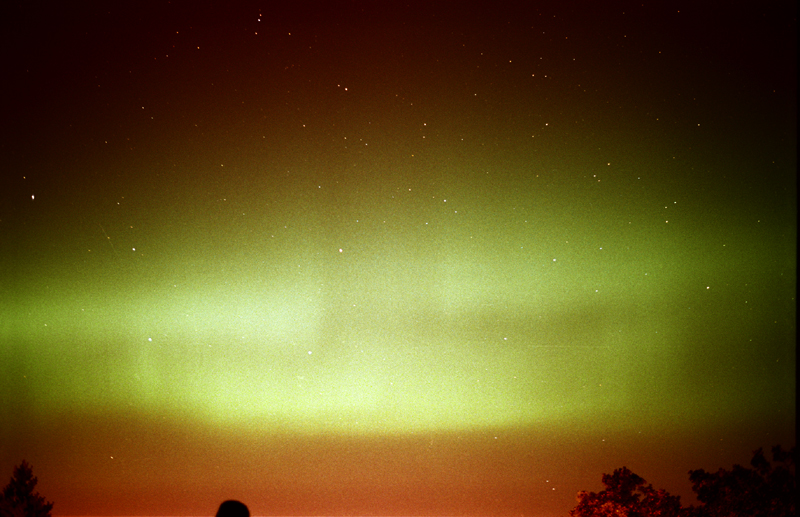
20 seconds exposure. Fuji Superia 200 film.
50mm f/2 Nikkormat lens.
Looking due north towards Ursa Major.
The yellowish glow at the bottom of the picture is light pollution from Minneapolis, about 35 km away.
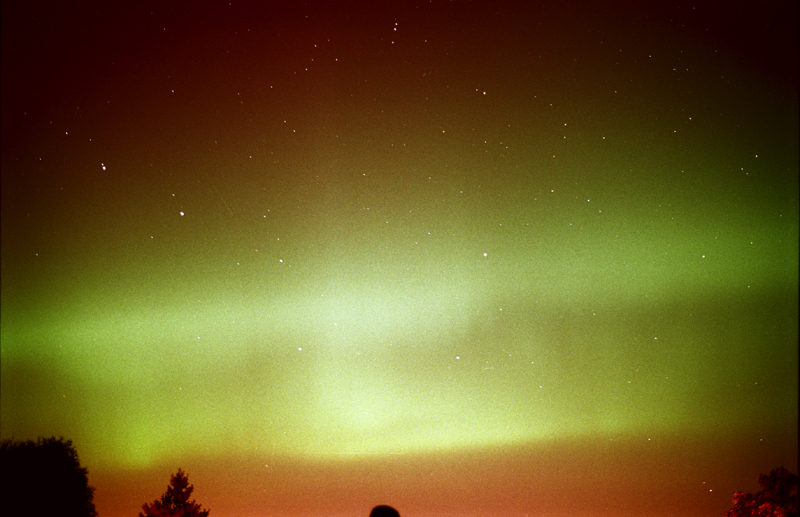
20 seconds exposure. Fuji Superia 200 film.
50mm f/2 Nikkormat lens.
After this time, the display again began to intensify. First, the green arc brightened and moved higher in the northern sky. Then red colour appeared at the top of the display.
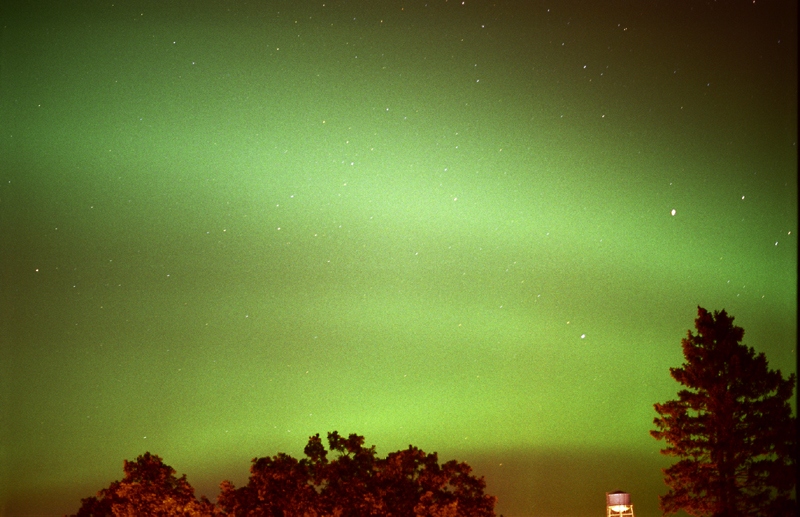
30 seconds exposure. Fuji Superia 200 film.
50mm f/2 Nikkormat lens.
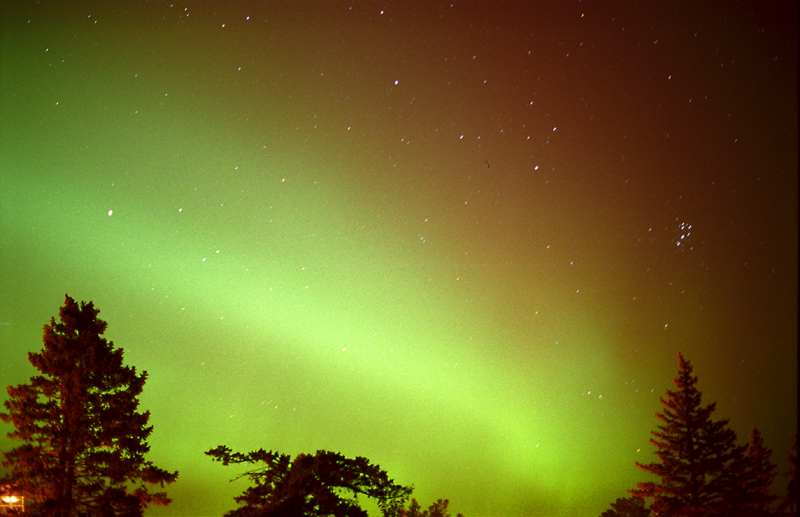
60 seconds exposure. Fuji Superia 200 film.
50mm f/2 Nikkormat lens.
The aurora remained like this for several minutes. Then bright rays started to appear. The arc also began to take a curtain shape.
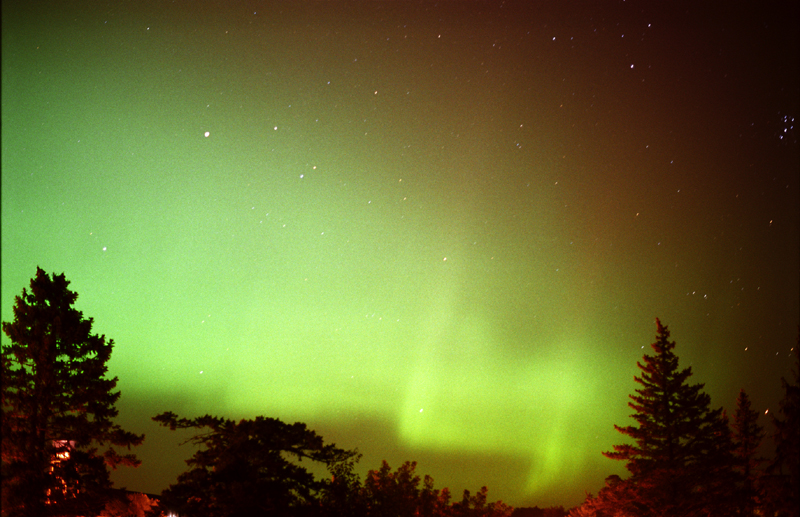
30 seconds exposure. Fuji Superia 200 film.
50mm f/2 Nikkormat lens.
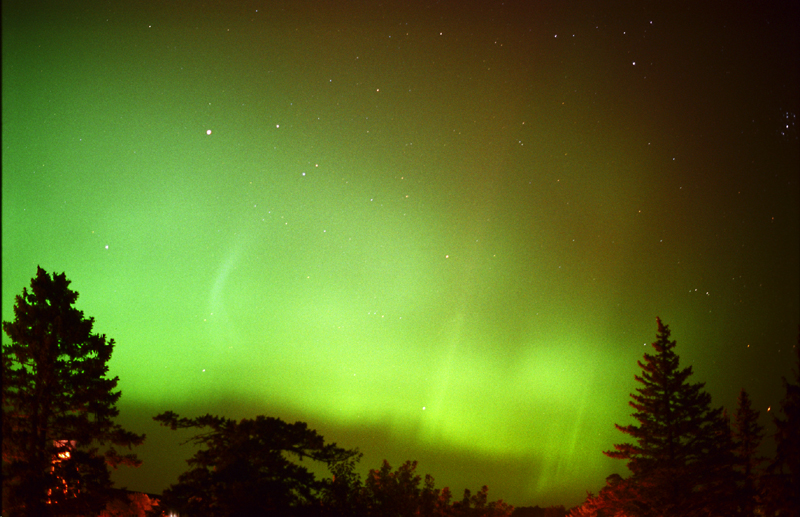
20 seconds exposure. Fuji Superia 200 film.
50mm f/2 Nikkormat lens.
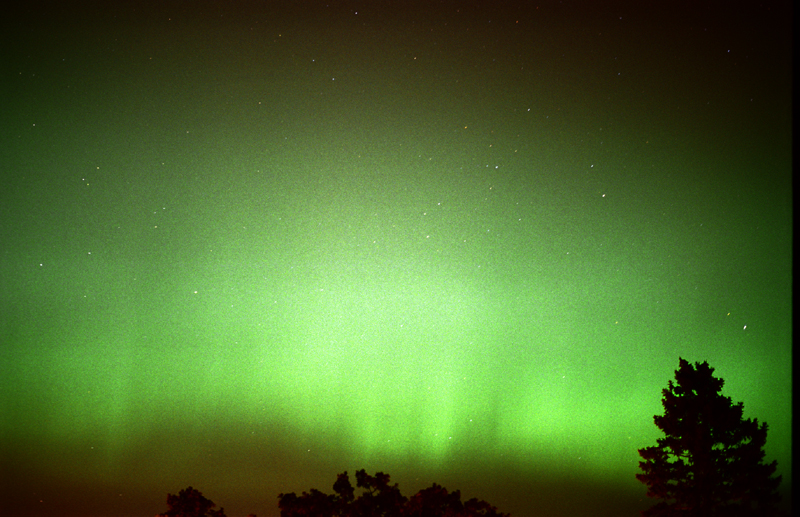
15 seconds exposure. Fuji Superia 200 film.
50mm f/2 Nikkormat lens.
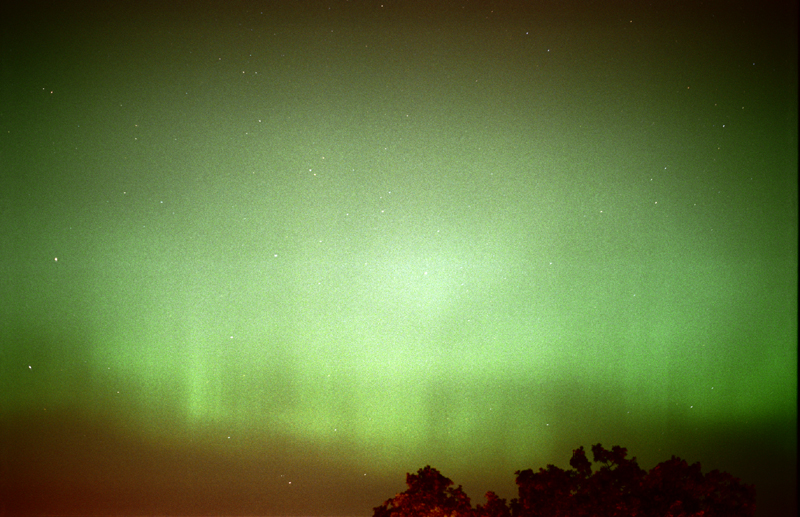
15 seconds exposure. Fuji Superia 200 film.
50mm f/2 Nikkormat lens.
At the height of the display the aurora was very impressive. A bright green arc, with some curtaining, topped by a red glow. Numerous bright green and red rays shimmering and weaving about. Deep sky observations were impossible due to all the light pollution! :-)
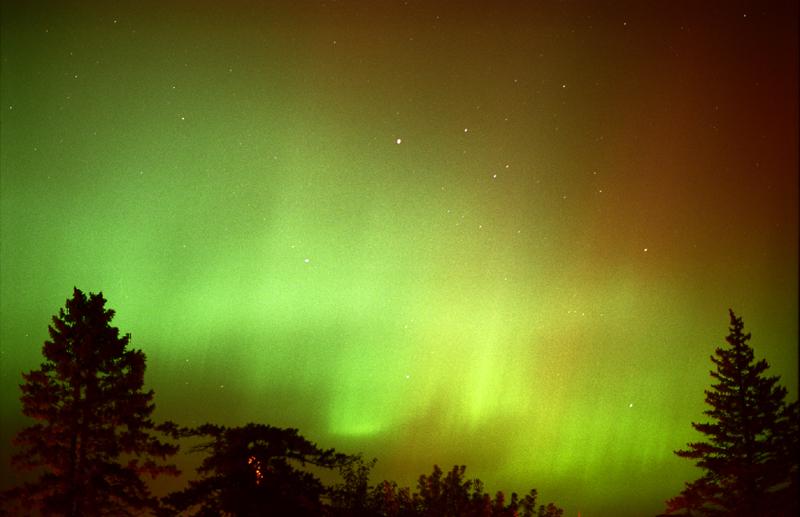
30 seconds exposure. Fuji Superia 200 film.
50mm f/2 Nikkormat lens.
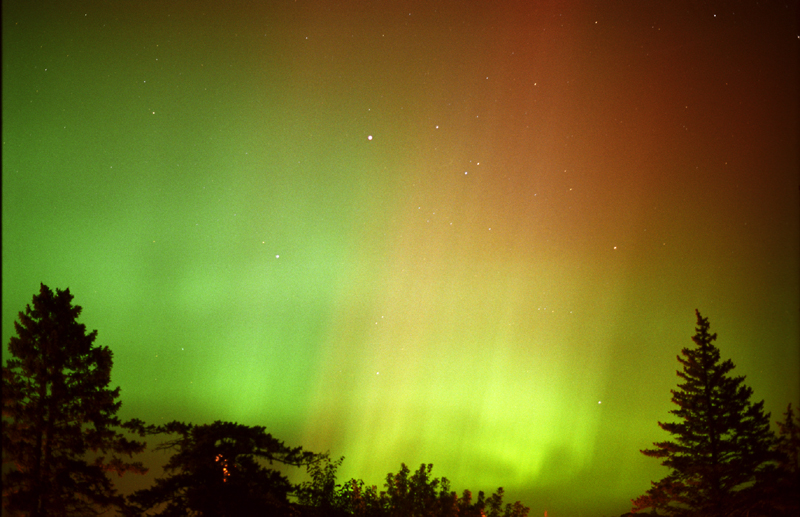
30 seconds exposure. Fuji Superia 200 film.
50mm f/2 Nikkormat lens.
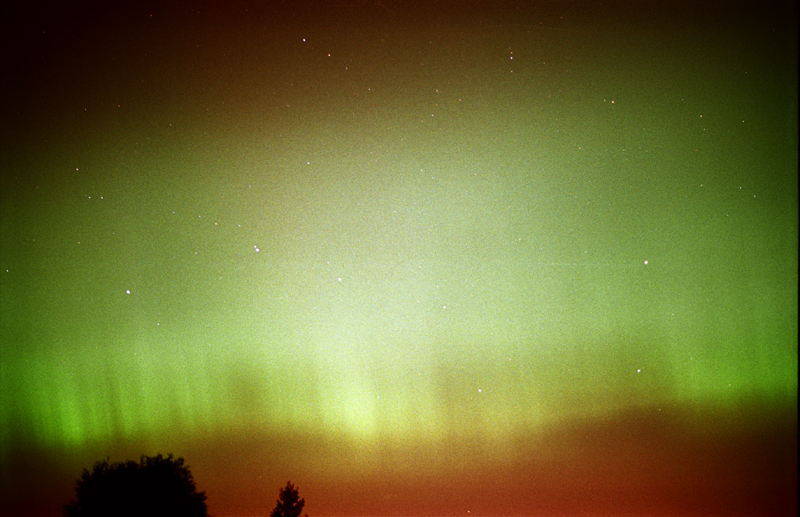
20 seconds exposure. Fuji Superia 200 film.
50mm f/2 Nikkormat lens.
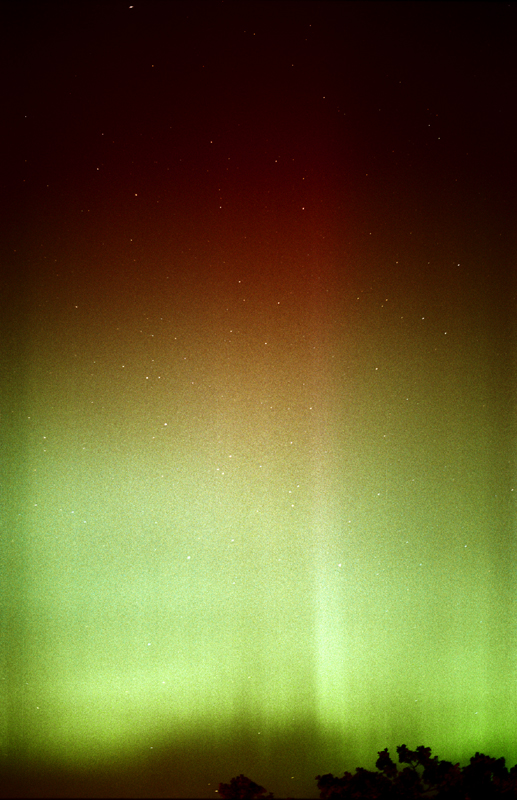
15 seconds exposure. Fuji Superia 200 film.
50mm f/2 Nikkormat lens.
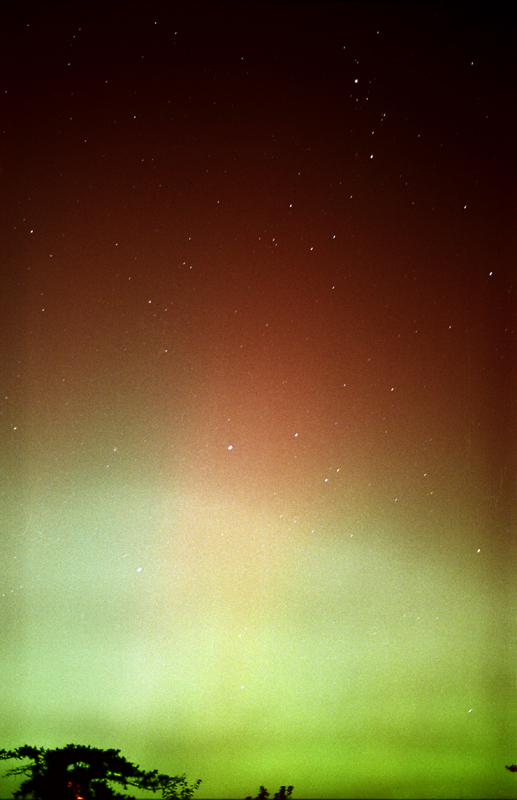
45 seconds exposure. Fuji Superia 200 film.
50mm f/2 Nikkormat lens.

30 seconds exposure. Fuji Superia 200 film.
50mm f/2 Nikkormat lens.
At one stage, several rays were observed streaming down from the zenith, forming a beautiful zenithal arc.
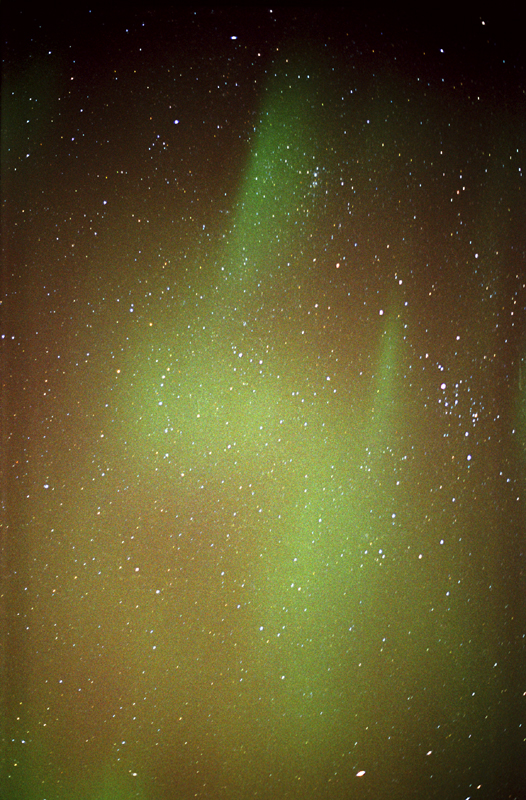
45 seconds exposure. Fuji Superia 200 film.
50mm f/2 Nikkormat lens.
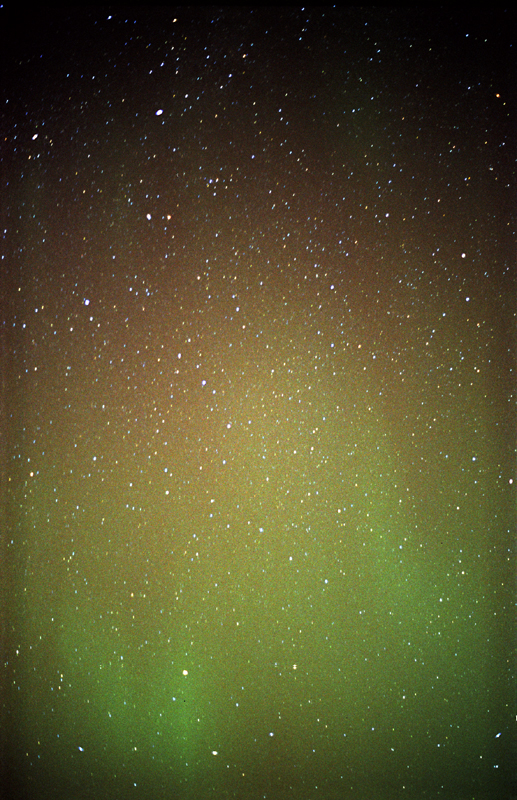
45 seconds exposure. Fuji Superia 200 film.
50mm f/2 Nikkormat lens.
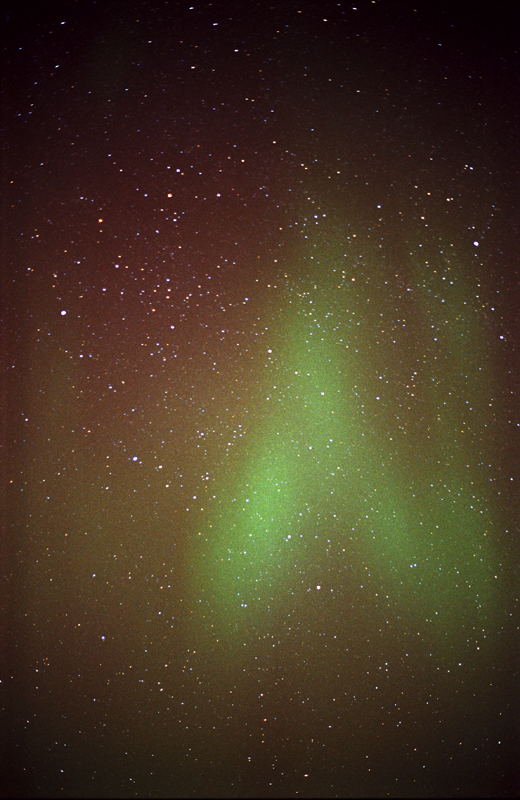
45 seconds exposure. Fuji Superia 200 film.
50mm f/2 Nikkormat lens.
I finally ran out of film at around 11.30pm local time. At this stage the aurora was still going strong, although not as active and bright as earlier. I continued to observe until almost midnight before calling it a night with the aurora still visible as a bright green arc topped with a red glow.
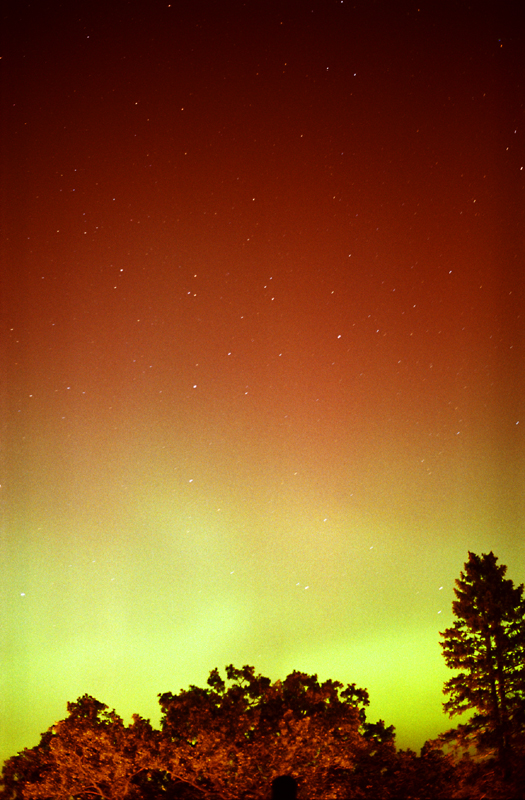
45 seconds exposure. Fuji Superia 200 film.
50mm f/2 Nikkormat lens.






















